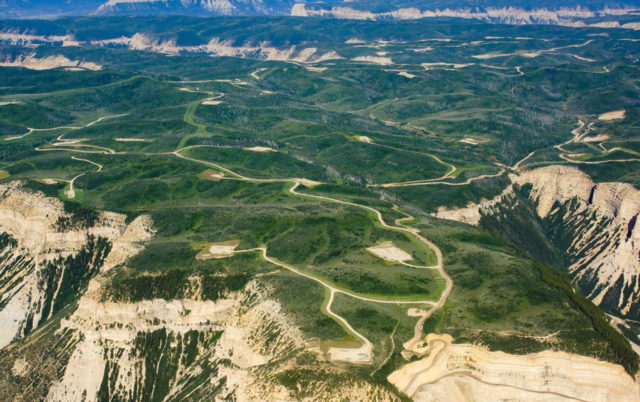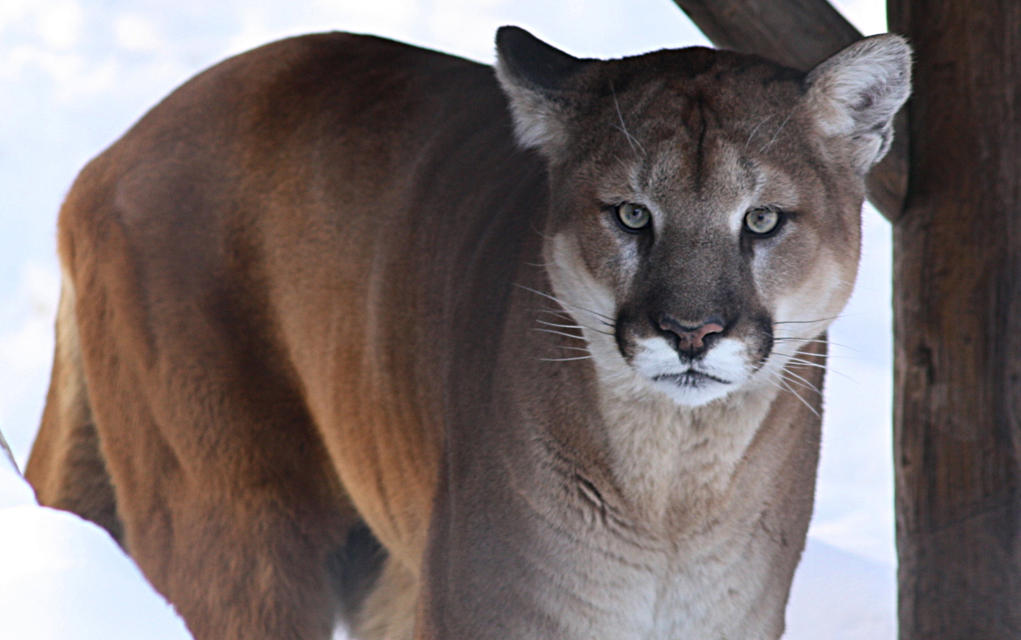
On Nov. 6, 2017, WildEarth Guardians (WEG) and the Center for Biological Diversity (CBD) agreed to a hold on their lawsuit against the USDA-Wildlife Services (WS), among others. The agreement to stay the proceedings was signed by the two environmental organizations and WS in regards to a lawsuit filed in U.S. district court on April 12. The lawsuit in question pertained to the predator control plans put forward by Colorado Parks and Wildlife (CPW), which are intended to boost mule deer population growth.
The agreement requires WS to prepare a new draft Environmental Assessment (EA) for its predator damage management work in Colorado by Dec. 15. The controversial management work being done by WS is to trap and kill black bears and mountain lions within CPW’s predator control areas, as reported previously by Boulder Weekly in this series of articles. Once the draft EA is completed, it will be submitted for public review and comment for 45 days. Subsequent to the comment period, WS will complete a final EA and issue a resulting decision, which could go a couple of ways. WS could reach either a finding of no significant impact, which would allow the killing of the animals to proceed or it could reach a finding of significance, which would require the preparation of a full Environmental Impact Statement (EIS) by Aug. 1, 2018, according to court documents. Should the two environmental groups be dissatisfied with the outcome of the EA or EIS, they would be allowed to reopen their lawsuit if they could show good cause.
This is good news for the animals. According to Gail Keirn, WS public affairs specialist, until all conditions are met, the Service has agreed “not to undertake, authorize the use of, and/or fund black bear or mountain lion hunting and/or trapping and/or killing to increase ungulate [deer, elk, etc.] populations in Colorado or to study the effects of those actions on ungulate populations in Colorado, including but not limited to participation in the [CPW’s] Piceance Basin Predator Control Plan and the Upper Arkansas River Predator Control Plan.”
“We’re thrilled that Colorado wildlife are getting a break from Wildlife Service’s deadly work,” said Collette Adkins, an attorney with CBD in a press release. “The additional analysis spurred by our lawsuit will reveal that Wildlife Services’ wildlife killing is scientifically unsound, ineffective and cruel.”

WEG and CBD have been arguing all along that the best available science reveals loss of habitat from oil and gas extraction is the driving factor causing mule deer to struggle, not predation from bears and lions. And in the Piceance Basin, where there is significant oil and gas extraction, processing facilities, and transportation infrastructure, that assertion is particularly salient.
In a draft program narrative for CPW’s Piceance Basin predator control plan, circulated amongst CPW staff and obtained by BW, Darby Finley, CPW terrestrial biologist, says that conditions on summer ranges in the Piceance Basin, including CPW’s predator control area, “are unique given the current level of fragmentation due to oil and gas development and not necessarily comparable to other Western Colorado mule deer populations.” But Neither CPW nor WS integrated Finley’s specific comment on oil and gas impacts — the only comment the scientist made on the draft — into the final program narrative approved by the CPW Commission. Nor were these oil and gas impacts mentioned in the context of CPW’s Piceance plan in WS’ final original EA, which was completed in January..
Instead, both CPW and WS state that conditions in the Piceance Basin are similar to other Western Colorado mule deer populations, and their predator control work “will likely be applicable to declining or below objective deer herds in the western third of the state,” according to both WS’s final EA and CPW’s program narrative. This suggests CPW and WS may be planning to use their lion- and bear-killing predator control plans in the Piceance Basin, where the cumulative activities of the oil and gas industry are a primary impact on deer populations, as a faulty justification for establishing an agency policy of killing even more lions and bears in other areas of Colorado in the name of boosting mule deer numbers.
But as previously reported in this series, the assumptions underlying these actions, namely that killing lions and bears will improve deer populations, do not appear to be based in science, according to prominent wildlife biologists. Instead, they seem to be more driven by the perceptions of hunters, outdoor enthusiasts and/or perhaps some other agenda of CPW, whose own research says oil and gas extraction impacts mule deer populations. So even if lions and bears are killed in the effort to increase deer populations, it may not work so long as oil and gas extraction continues. The science actually creates a quandary for Colorado’s hunters and other outdoor enthusiasts who have been specifically targeted by the oil and gas industry’s pro-fracking advertising campaigns. For now, they support both growing the deer populations and oil and gas extraction. But who knows how their positions may shift when they come to realize oil and gas extraction is likely amongst the primary causes shrinking their all-important deer herds.
Meanwhile, CPW representatives are traveling the state attempting to generate support for their upcoming attempt to reintroduce a funding bill that failed in the 2017 Colorado legislative session. And among the major expenditures CPW is listing as reason for needing to increase its revenues is the Mule Deer Strategy. Both the Piceance Basin and Upper Arkansas River Predator Control Plans are part of the Strategy.
In order to arrive at its Mule Deer Strategy, CPW traveled the state to gather feedback via meetings and surveys from various stakeholders including hunters and landowners. According to internal CPW documents obtained through an open records request by BW, just prior to the outreach meetings, which were conducted by Keystone Policy Center (KPC), CPW staff held an internal meeting to discuss its outreach effort. At this meeting, CPW established that it would put the focus on predation as opposed to other possible impacts to deer populations. When KPC later presented its survey results, sure enough the stakeholders appeared to be most concerned with predation.
But there was a likely reason for the stakeholders listing lions and bears as their top priority and not the oil and gas industry.
In these outreach meetings, KPC emphasized that respondents should consider impacts to mule deer that CPW could most effectively address. Notably, CPW can adjust hunting quotas and potentially contract WS to kill predators to attempt to influence deer demography, but the agency has no regulatory authority when it comes to oil and gas extraction unless it was to fight for it. And this is reflected in the choices CPW/KPC gave the 169 stakeholders in the seven outreach meetings across the state. Not only were those taking the survey asked to consider issues specifically related to whether or not CPW could effectively address them, but the cumulative impacts of oil and gas extraction were broken out into numerous discrete categories dealing with problems such as declining habitat quality, habitat loss, weather, highway mortality and barriers to migration. In other words, predation came in as the biggest perceived problem for mule deer because oil and gas extraction wasn’t a single choice on the survey, even though CPW’s own scientific research has shown its serious impacts to deer populations.
And because the cumulative impacts of oil and gas extraction were fragmented in the survey, predation emerged as the primary suspect of mule deer population decline, according to respondents, at 20 percent. But the cumulative impacts of oil and gas extraction, which were specifically identified by respondents numerous times, when combined into one category as they exist in reality, drastically outweigh predation’s perceived impacts on mule deer decline. According to those same respondents, areas of concern where oil and gas industry impacts were specifically mentioned include: declining habitat quality 17 percent, habitat loss 15 percent, weather 12 percent, highway mortality 7 percent, and barriers to migration 5 percent. Had oil and gas industry impacts not been broken into no less than five categories, it would have come in at 56 percent, or nearly three times as important to the decline of mule deer populations as predation according to stakeholders. Essentially, CPW/KPC have made it impossible for hunters and outdoor enthusiasts to identify the oil and gas industry as impacting mule deer populations more than predation.
Critics of the predator control plans can, and have, argued that it appears CPW is working unusually hard to convince Colorado’s hunters and outdoor enthusiasts that oil and gas extraction is not the primary culprit when it comes to deer population declines. It is also particularly ironic to blame lions and bears and kill them when such extraordinary actions may not increase deer numbers so long as habitat loss from suburban and exurban development, along with the cumulative impacts from oil and gas extraction on public and private lands continue to occur.
Neither CPW nor Department of Natural Resources leadership responded to questions for this article.
Just a reminder: CPW is also the target of another separate and pending state lawsuit challenging the legality of these same predator control plans. That suit was also filed by WildEarth Guardians and alleges CPW’s plans are a violation of Amendment 14 of the Colorado Constitution. However, Judge Robert McGahey Jr., who is deciding this case, has yet to rule.














